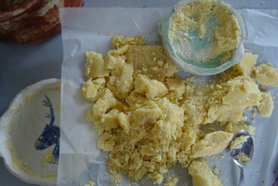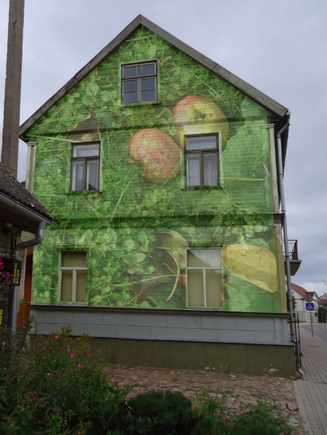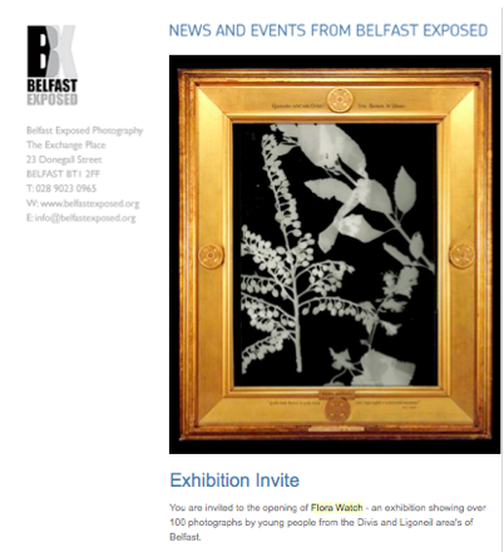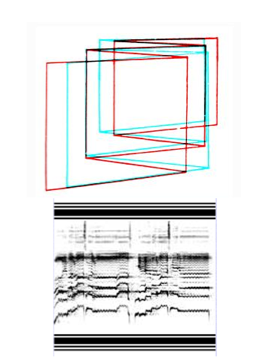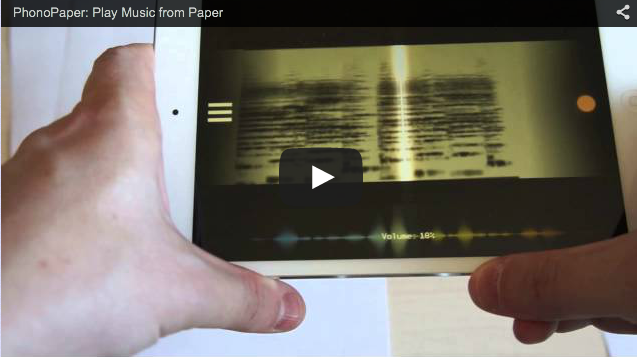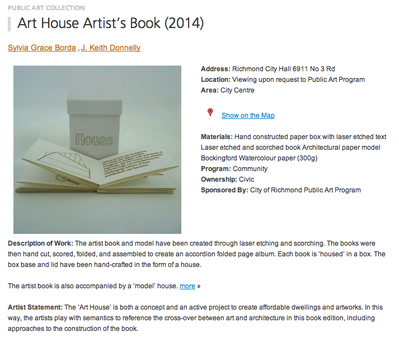COMMUNITY ENGAGEMENT ART PROJECTS
As an artist, Sylvia is passionate about considering alternative means such as the application of generous design and the arts to add value to communities and rural regions. Below are a few examples of social and community engagement projects that the artist has been leading over the last decade.
Living Artworks (2021-2023)
In the development of a set of earth climate observation artworks for the Kofele community in Ethiopia a number of different community partners were engaged in the the development of the artworks and tree nursery. Three middle schools participated in leaning not only about local biodiversity, climate change and native flora but were both directly involved in being mentored by elders in how to establish a successful tree nursery and in the planting of the artworks. School teachers are pleased to see the direct application of nature care as part of the curriculum and are managing the earth observation climate artworks in order to ensure that the trees will continue to thrive. Additionally community elders remain active in the collaboration ensuring the project component, particularly the tree nursery, could be a pivotal and a long-term community asset. To date over 10,000 tree saplings have been raised by the community and this aspect of the project will continue for the foreseeable future.
The following video, a presentation by Sylvia Grace Borda at a regional governmental landscape and planning conference, gives a contextual overview to how this community arts project evolved and how participants have become active co-authors in producing living artworks.
Living Artworks (2021-2023)
In the development of a set of earth climate observation artworks for the Kofele community in Ethiopia a number of different community partners were engaged in the the development of the artworks and tree nursery. Three middle schools participated in leaning not only about local biodiversity, climate change and native flora but were both directly involved in being mentored by elders in how to establish a successful tree nursery and in the planting of the artworks. School teachers are pleased to see the direct application of nature care as part of the curriculum and are managing the earth observation climate artworks in order to ensure that the trees will continue to thrive. Additionally community elders remain active in the collaboration ensuring the project component, particularly the tree nursery, could be a pivotal and a long-term community asset. To date over 10,000 tree saplings have been raised by the community and this aspect of the project will continue for the foreseeable future.
The following video, a presentation by Sylvia Grace Borda at a regional governmental landscape and planning conference, gives a contextual overview to how this community arts project evolved and how participants have become active co-authors in producing living artworks.
In both 'What are you doing, Richmond? (2018-19) and 'Kissing Project' (2016-2017) local residents were active participants as both subjects for the camera and co-authors aiding in the the images' design from suggesting where to shoot and how they hoped to be portrayed in terms of meaningful activities. In 'What are you doing, Richmond? over 12 community groups directly participated in the project's development. In the 'Kissing Project' through an open call for participation over 100 submissions were received and by a lottery system 14 participant projects were evolved over an 18 month period.
|
IT'S MORE THAN JUST A BISCUIT
Lumsden Biscuit (2015-2016) Social and Community Innovation Produced in partnership with Lumsden Village Community Association, & Scottish Sculpture Workshop (SSW) SCOTLAND Sylvia worked with local community members in Lumsden to produce handmade short bread artworks in an attempt to create an alternative and sustainable economy for the rural area. The artist worked with metal crafts and mould makers and in consultation with Aberdeenshire rural communities to produce custom-made shortbread moulds. This is a three-fold event with outcomes as follows: Firstly, it is assisting in skills transfer to local food makers in learning how to cast and forge a range of traditional shortbread moulds, now a lost art due to commercial production of food moulds in silicone. Secondly, the project is creating the first contemporary delivery of food moulds to be marketed as food implements and functional artworks designed by many collaborators. Thirdly, the project is assisting to ‘kick-start’ a regional economy in areas depressed by the UK down-turn, and often the lack of regional funds to attract investors to towns and villages. |
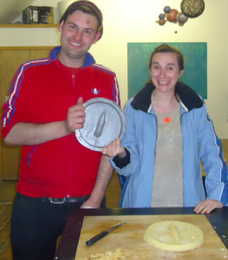
The production of shortbread, through what may seem an antiquated system of hand moulds, is rekindling interest in the concept of communities working together to design their own futures. The shortbread mould project continues to assist n the creation of knowledge transfer and the youth jobs. The bespoke biscuits have been marketed to both locals and to visiting tourists to support this local roots sustainability and design initiative. The project is using butter for shortbread production in order to support local dairies and to reinforce the inherent need to move away from oil production as a principle economic driver. The concept of a mould acting as an open multiple artwork, for example, has precedence in the candy spills produced by contemporary artist and activist, Felix Gonzalez Torres. The project driven by Sylvia is a contemporary design solution and testament to supporting Scottish food production at the citizen level. It aims to inspire others to create and debate art and rural development through its adoption; thus, it is becoming a platform to amplify small town, regional and wider dialogue. This project has since launched under the official title banner of the 'Lumsden Biscuit' More about the biscuit's community roots can be found on the village website at http://lumsdencommunity.co.uk/the-lumsden-biscuit/ |
PAINT THE TOWN: APPLE MURALS in partnership with SERDE Arts Centre, Azipute Regional Planning office and Azipute Tourism Board
LATVIA (2015-2017)
Social and Community Innovation
FLORA WATCH
Belfast, Northern Ireland (2009-2010)
Community Engagement
Belfast, Northern Ireland (2009-2010)
Community Engagement
|
Sylvia developed and delivered the Flora Watch programme as a learning commission for Belfast Exposed and Northern Ireland's Art Forum. Her project led to the delivery of 10 month learning course which focused on the use of photograms, the historical photographic technique involving the creation of silhouettes by placing objects onto light sensitive paper, as a way to engage and train community leaders about photographic and flora practices.
Over 12 community youth and adult learning officers from across Belfast and outlying metropolitan areas participated in gaining a grounding in photographic and plant learning activities that could be then transferred back to a participant’s local communities and to local youth clubs. As a result of the leader training, nearly 100 youth became participants of the Flora Watch programme within the year. |
Flora Watch project legacies included a Roundtable about Community and Artist Legacies Plus wider project adoption: Fiona Watters, the Education and Outreach officer for the Women’s Prison Service through Belfast Metropolitan College, integrated Flora Watch at a young offender’s prison. She praised how the project began to be noticed by women's groups in the prison, who in turn adapted the project to suit their own needs. The incarcerated women found that by taking on the project, it was very beneficial in two ways: it allowed them to better appreciate the green spaces on the prison grounds, and it gave them an activity which they could do with their own children. The latter was particularly important, as it gave the women a way of bridging family relations, and the confidence that they can impart knowledge to their child.
Fiona Watters continues to champion Flora Watch for the Northern Irish prison service as a project where unexpected outcomes cannot be anticipated beforehand, but illustrated the on-going benefits of allowing for collaborative and adaptive practices to be tabled. Watters commented during the roundtable that the Flora Watch’s open design as a learning programme, for instance, enabled prisoners needs to achieve a level of personalisation in their project – making nature trails and plaques, for example – something which was ultimately of much greater value to them than the activities that an artist might drive.
Fiona Watters continues to champion Flora Watch for the Northern Irish prison service as a project where unexpected outcomes cannot be anticipated beforehand, but illustrated the on-going benefits of allowing for collaborative and adaptive practices to be tabled. Watters commented during the roundtable that the Flora Watch’s open design as a learning programme, for instance, enabled prisoners needs to achieve a level of personalisation in their project – making nature trails and plaques, for example – something which was ultimately of much greater value to them than the activities that an artist might drive.
NATURE'S SCORE SHEETS: NOT WHAT IT SEEMS
Commission for Mustarinda Arts, FINLAND (2017)
Media Innovation with Nature
The artist experimented on developing an audio work creating unexpected varied timbres that are directly drawn from nature, but recorded through both analog and digital means. By building on and merging from the past and present whilst reflecting on the natural elements around Mustarinda, Sylvia is synthesizing how nature and man-made values can act and become mutable tools for visualization and for wider commentary.
For the work, Nature's Score sheets: Not what it seems, Sylvia responded to the concept of three-dimensionality, how it challenges what is represented and what is being experienced or remains hidden. In the creation of artworks incorporating 'virtualized' spaces, stereo images and audio she utilised these elements to represent conventions or building blocks of what can constitute 3-D, and the multiple viewpoints that can arise.
In diptychs, two ‘like’ images require viewing technology borrowed from Victorian times to see the world in stereo. Thus stereo image works appear to the viewer as a diptych; however, it is not until seen with a viewer does the true dimensional nature of the works appear. By using visual imagery and audio code (through phonopaper technologies) the artwork’s feedback and wider interpretation do not reside as one would anticipate. It does not simply represent mere artifacts but rather becomes independent multi-dimensional sensory artworks.
OTHER PARTNERSHIPS
HOUSING
Architecture & design innovation
The artist has been collaborating with former East Kilbride New Town artist, J.Keith Donnelly, from 2009 to present to examine how to create new housing capital to act as both artworks and livable spaces. The City of Richmond (BC, Canada) commissioned an ‘Art House’ report and supporting artwork (2013-14) for its municipal collections. Consideration is given to Sylvia's concept of artful living and was recorded in the City of Richmond minutes (2013) as a possible plan to adopt for the area's future residential planning.
HOUSING
Architecture & design innovation
The artist has been collaborating with former East Kilbride New Town artist, J.Keith Donnelly, from 2009 to present to examine how to create new housing capital to act as both artworks and livable spaces. The City of Richmond (BC, Canada) commissioned an ‘Art House’ report and supporting artwork (2013-14) for its municipal collections. Consideration is given to Sylvia's concept of artful living and was recorded in the City of Richmond minutes (2013) as a possible plan to adopt for the area's future residential planning.
Architectural criticism and writing - thinking about communities
Sylvia has been engaged in writing about Modernist architectural planning since the publication of her book, EK Modernism, on the town of East Kilbride in 2006.
As of recent, Sylvia has been asked to write peer reviewed articles to exam how social housing can be better considered. She has coined and is campaigning for the adoption of the term 'generous architecture' and 'generous design' to be used as a new metric in the evaluation of future housing development.
Her most recent articles can be read through the following links:
“Rethinking towns and cities: becoming generous” in Reiach and Hall 50 years of Scottish Architecture: The Stravaigers (September 2015) Edited By Neil Gillespie and Laura Kinnaird; pp 9-13 ISBN 978 0 95556148 6 6
"Considering the house as social agent" commissioned essay as part of the Scottish Civic Trust conference event, Housing in Scotland, learning from the past - building for the future (November 2015)
In regard to earlier social engagement projects delivered by the artist ~ see Past Projects: Seeing Across Boundaries.
Sylvia has been engaged in writing about Modernist architectural planning since the publication of her book, EK Modernism, on the town of East Kilbride in 2006.
As of recent, Sylvia has been asked to write peer reviewed articles to exam how social housing can be better considered. She has coined and is campaigning for the adoption of the term 'generous architecture' and 'generous design' to be used as a new metric in the evaluation of future housing development.
Her most recent articles can be read through the following links:
“Rethinking towns and cities: becoming generous” in Reiach and Hall 50 years of Scottish Architecture: The Stravaigers (September 2015) Edited By Neil Gillespie and Laura Kinnaird; pp 9-13 ISBN 978 0 95556148 6 6
"Considering the house as social agent" commissioned essay as part of the Scottish Civic Trust conference event, Housing in Scotland, learning from the past - building for the future (November 2015)
In regard to earlier social engagement projects delivered by the artist ~ see Past Projects: Seeing Across Boundaries.
